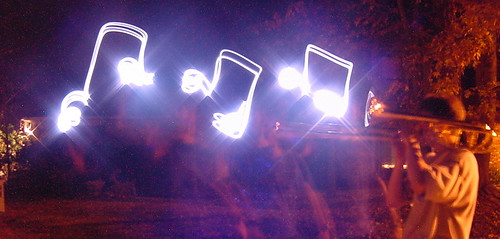Letting The Music In
 Today I am listening to Pandora as I work. They have several holiday “stations” (many available over iTunes and on mobile devices, as well). I love Pandora because I can teach it what I like. I can also change moods: the Peaceful Holiday station as I stress about an upcoming board meeting, Rock Holiday to keep me awake on a Friday afternoon, etc.
Today I am listening to Pandora as I work. They have several holiday “stations” (many available over iTunes and on mobile devices, as well). I love Pandora because I can teach it what I like. I can also change moods: the Peaceful Holiday station as I stress about an upcoming board meeting, Rock Holiday to keep me awake on a Friday afternoon, etc.
As I enjoy the privilege of music in my workday life (unlike during 27 years of music-less classrooms), I can’t help wondering why we can’t let the music in for kids, too. Classrooms have no music, except when we ship kids down the hall for their weekly fix. Of course, different music has different effects on each student, so figuring out which music, if any, actually helps a student focus, think, and create will be a challenge. Individualizing music is no different from individualizing any other learning.
I feel another analogy coming on.
Pandora has this remarkable way of taking self-reported “like it” and “hate it” signals and integrating them with a detailed analysis of musical features: lyrics, rhythms, styles, instrumentation, even voice quality. The more the listener reports “like it” or “hate it,” the better Pandora is at sending out just the “right stuff.” So why don’t we involve kids in reporting “works for me” and “doesn’t work for me” as soon as they are developmentally ready to reflect on which approach helps them learn, including music?
With younger ones, we could simply expose them to different approaches (and music) so they know what they are. These might include seeing the images of new concepts, listening to podcasts about them, MAKING podcasts about them, reading quietly, reading aloud, building something, etc. We just need to be sure we offer the “stations” of music (learning) with as much variety as Pandora’s music offerings. The learning offerings should include actual music as they learn, too. The science teacher in upper elementary or middle school could even assign them to conduct experiments on the impact of different “stations” on their test performance or other evidence of mastery.
By the time kids are in late middle school and entering HS, they should have a pretty good idea of what helps them learn. Asking them to be involved in defining it— and then in facilitating it– will make them better lifelong learners than any approach we superimpose on them.
So back to the music. With Pandora and other music so readily available in streaming forms and on mobile devices, etc., why aren’t we letting the music in? Yes, there are times when headphones will prevent kids from hearing necessary information. But the impact of individualized “Thinking Pandora” stations delivered via kids’ iPhones as they work independently could let far more than just the music in.
– written with accompaniment from Pandora’s Peaceful Holiday and Folk Holiday stations




I try to let the music in as often as possible.
I never agreed with my administration’s categorical ban on MP3 players. I find that the best way to handle them is to set limits. If we’re engaged in whole class instruction, then headphones are inappropriate. If you’re working individually, taking a test, silent reading, etc, then listen to music.
I’d rather that they pop on headphones than start talking to their neighbor and disrupt the class.
I also like to fill the classroom with my own music. Pretty much on a daily basis, I play something in the transition of classes into the first minute or two of class as the students get settled in.
It gives me a chance to expose them to music they might not otherwise hear (jazz, blues, classic rock). You might even say it has some curricular value for a Social Studies class. At least, that’s what I’ll tell my supervisor if he ever asks…
Comment by Brian — December 13, 2008 @ 12:27 am